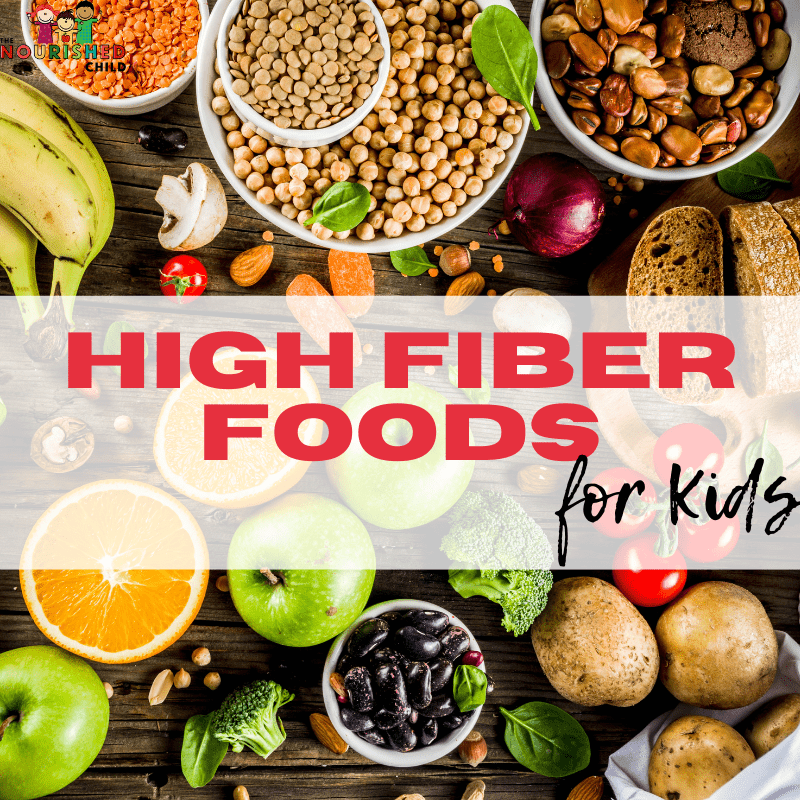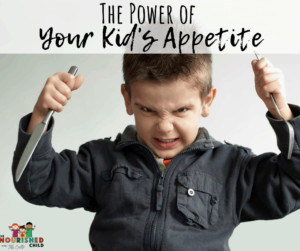High-Fiber Foods for Kids
April 12, 2023
High-fiber foods are the foundation of a healthy diet. Let’s dive into the best high-fiber foods for kids to enjoy in their meals and snacks.
Parents may not hear as much about fiber as they do about protein, carbohydrates, fat, vitamins and minerals.
But fiber is one of the most important nutrients for kids. It helps prevent constipation, keeps the gut healthy, and helps kids feel full longer.
A high-fiber diet regulates blood sugar and may decrease the risk of diabetes, which is on the rise in kids.
Recent studies found that most kids in the U.S. are falling below the fiber recommendations.
The good news is that with a few healthy swaps and food additions, you can easily add more fiber to meals and snacks. If your child has a nutrient-packed diet, he may be off to a good start with fiber.
In this article, I’ll talk about why fiber is important, the top foods that are high in fiber for kids, and tips on how to boost the fiber content of your child’s meals.

What Is Fiber?
Let’s look at the nutrition label of a popular brand of 100% whole wheat bread.

Arnold whole wheat bread
Under “carbohydrates” you’ll notice sugar, added sugar and fiber are types of carbohydrates listed. The difference between fiber and other carbohydrates like sugar is the body can’t digest fiber.
So what happens to fiber in the body?
There are two kinds of fiber that play slightly different roles in digestion.
Soluble fiber, which dissolves in water, helps lowers cholesterol and blood sugar. Beans, nuts, lentils, oatmeal, apples, and blueberries are high-soluble fiber foods.
Insoluble fiber, which doesn’t dissolve in water, helps prevent constipation. Insoluble fiber bulks up your child’s poo during digestion and speeds up the passage as it moves through the intestines.
Whole grains like whole wheat pasta, brown rice, whole-wheat bread, nuts, seeds, leafy greens and fruits are excellent sources of insoluble fiber.
Why Do Kids Need Fiber?
Fiber plays an important role in digestion, blood sugar management, and a healthy gut microbiome.
1. Fiber helps prevent constipation
Constipation affects around 3% of kids all over the world. And, 10% of kids in the U.S. have chronic constipation. Changes in the diet may cause constipation such as going from purée to solid food, drinking too much milk, or eating a limited variety of kid-favorite bland foods that tend to be lower in fiber.
2. It boosts a healthy gut microbiome
Fiber is a prebiotic, or food for “good” gut bacteria. Prebiotics like yogurt, kefir and fermented veggies introduce bacteria to the gut. And, fiber feeds the good bacteria. A healthy gut microbiome is important for immunity and a healthy gastrointestinal system.
3. Keeps blood sugar steady
Fiber manages blood sugar in two ways. High-fiber foods break down slowly, preventing a sharp increase in blood sugar and the potential crash that follows.
Another way fiber keeps blood sugar steady is due to the fact fiber isn’t digested like other nutrients. It doesn’t affect blood sugar the way other carbohydrates do.
How Much Fiber Do Kids Need?
According to the Institute of Medicine, children 2 to 18 years old need about 14 – 31 g of fiber each day (more on that below).
Here’s how the Dietary Guidelines for Americans break down fiber needs for kids by age and gender.
| AGE | FIBER (GM/DAY) |
| 2 – 3-year-old | 14 g |
| 4 – 8-year-old male | 20 g |
| 4 – 8-year-old female | 17 g |
| 9 – 13-year-old male | 25 g |
| 9 – 13-year-old female | 22 g |
| 14 – 18-year-old male | 31 g |
| 14 – 18-year-old female | 25 g |
What Foods Are High In Fiber?
The best high-fiber foods grow in nature, or are grains that are minimally processed. Fruits and vegetables are an easy way to level up the fiber in your child’s diet.
Don’t worry about counting grams or how much soluble and insoluble fiber a food contains. Instead, focus on adding foods from the lists below.
Fruits and Vegetables
As a pediatric dietitian, I encourage families to introduce fruits and vegetables to kids early to prime their taste buds so they’re more likely to eat them as they get older.
Fruits and veggies contain key nutrients for a child’s growth and development and they’re also some of the best sources of fiber.
All fruits and vegetables contain fiber so offer whatever your little one will eat. And keep trying to introduce a greater variety.
Whole Grains
Whole grains and refined grains are two different grains.
Whole grains still have the whole grain kernel. The bran and germ are removed to make refined grains, which gives refined grain foods a finer texture and longer shelf life. That’s what gives white bread a soft texture.
The iron, B vitamins and fiber are removed from refined grains. Although refined grains are enriched to put back the iron and vitamins lost during processing, fiber isn’t added back.
Look for “whole wheat” or “whole grains” as one of the first ingredients on a nutrition label like this 100% whole wheat bread label:

These are examples of whole grains:
- Oatmeal
- Quinoa
- Bulger
- Whole wheat pasta
- Ready-made whole grain cereals
- Brown rice
- Whole grain crackers
- 100% whole wheat bread
Nuts, Seeds, Beans and Legumes
Beans, nuts, seeds and legumes are excellent sources of fiber. If your kiddo has a tree nut or peanut allergy, focus on beans and lentils. You might not think of beans as “kid-friendly” but don’t forget about chili, bean burgers, or hummus.
- Any kind of canned or dry beans including black beans, kidney beans, chickpeas, navy beans and pinto beans.
- Tree nuts and peanuts (nuts are a choking hazard so avoid giving nuts to kids younger than 4 years old)
- Lentils
- Chia seeds, sesame seeds
Can You Give Your Child a Fiber Supplement?
I am a food-first dietitian, so I like to make changes to a child’s diet before adding supplements.
Start with natural constipation remedies like adding prune juice or water, and taking a closer look at what your child is eating and drinking.
Make sure your child drinks enough water especially as he eats more fiber-containing foods.
Too much fiber at once can cause constipation and a blockage. If that happens, an enema may be necessary.
Check with your pediatrician about a fiber supplement that’s safe for kids if natural constipation remedies don’t work.
Tips for Adding High-Fiber Foods to a Child’s Diet
Don’t worry about counting grams of fiber. Instead, slowly introduce top high-fiber foods into your kiddo’s meals.
A little goes a long way with tiny tummies so you don’t want to overwhelm their belly with too much fiber at once. Remember, a big jump in daily fiber content can cause upset tummies and gas.
Make sure your little one is drinking enough liquids. A high-fiber diet without enough water can cause more constipation!
Here are a few easy tips to level up the fiber in your little one’s meals and snacks.
- Offer fruit and nuts as snacks and add to ready-made or hot cereals.
- Change up the bread and grains in the house, and buy whole grain and 100% whole wheat products instead.
- Upgrade crackers by looking for minimally processed types and those made with whole grains.
- Make a yogurt parfait with low-sugar granola or nuts.
- Keep fruit washed and available for children to grab between meals.
- Offer fruit instead of juice, which has more fiber than juice.











